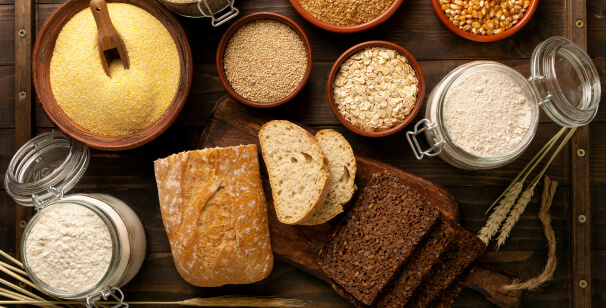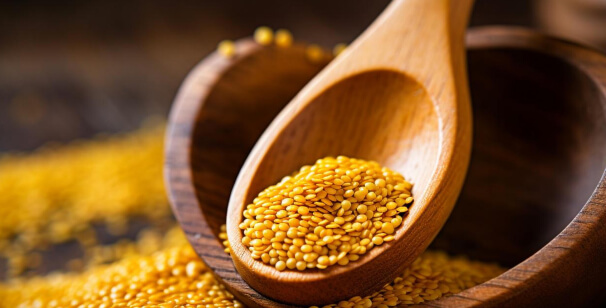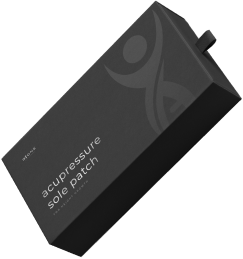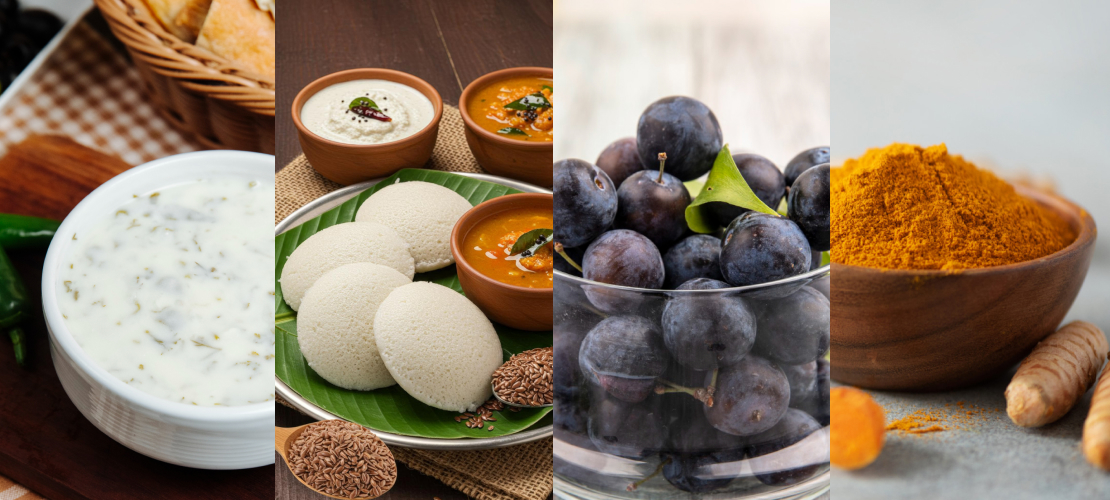Indian cuisine is an explosion of different flavors! From spicy curries to buttery naans, it’s a feast for our taste buds. But what happens when your body throws a curveball, and food allergies or intolerances crash your flavor party? Don’t worry, managing food sensitivities in the land of masalas and tandoors isn’t as complicated as it sounds. With a little tweak here and a substitute there, you can still enjoy your favorite dishes without triggering an allergic meltdown.
So, let’s dive into the world of food allergies in Indian cuisine and figure out how to dodge the allergens while still keeping your plate full of flavor!
First and foremost we suggest you get a food intolerance test to know your allergies and sensitivities. With little kids you can always try small amounts of foods as a test but remember to always try them in limit in a safe atmosphere with observation and easy access to a hospital.
Common Food Allergies

Before we jump into the details, here are some common food allergies that can cause reactions
- Lactose intolerance (Dairy)
- Celiac disease (Gluten)
- Nut allergy (Peanuts & Tree nuts)
- Mustard seed allergy
- Seafood allergy
Now, let’s break down each allergy, its symptoms, and how you can still enjoy your meals.
1. Lactose Intolerance (Dairy)

Why It Happens
For people with lactose intolerance, their bodies don’t produce enough lactase, the enzyme responsible for digesting lactose present in dairy products. This leads to digestive discomfort. In severe cases, some may also be allergic to dairy proteins, like casein and whey, which can trigger an immune response.
Symptoms
It comes with that icky clammy feeling of discomfort and knowing with a stomach rumbling like a T-rex.
- Stomach cramps
- Bloating
- Diarrhea
- Nausea
- Gas
- Headache
Potential Treatments
If the allergy is a result or side effect of a certain health condition then addressing the same might improve the symptoms. The best treatment for lactose intolerance is to avoid or limit dairy products based on the extent of your reaction. Lactase supplements may help some people digest lactose more easily.
Substitutes
Indian cuisine has many dairy-free alternatives:
- Swap out ghee and butter for coconut oil or mustard oil.
- Replace yogurt with coconut milk or almond milk in creamy curries.
- Substitute paneer with tofu or cashew-based alternatives for a soft, rich texture.
2. Celiac Disease (Gluten)

Why It Happens
Celiac disease is an autoimmune disorder where ingesting gluten, a protein found in wheat, barley, and rye triggers an immune response. Neglecting it may cause damage to small intestine lining and limit its ability to absorb nutrients. Some people may also experience gluten sensitivity, leading to similar digestive symptoms without the autoimmune response.
Additionally, maintaining healthy gut health is crucial in managing food sensitivities and overall digestion. Poor gut health can exacerbate gluten sensitivity and other food intolerances, making it essential to support your gut microbiome while avoiding gluten-rich foods. Learn more about how gut imbalances can impact your digestion and food sensitivities.
Symptoms
- Bloating/Gas
- Diarrhea Or Constipation
- Fatigue
- Brain fog
- Weight Loss
- Abdominal Pain
- Mouth Ulcers
- Rashes
Potential Treatments
The only proven treatment for celiac disease or gluten sensitivity is eliminating gluten from your diet entirely. A food intolerance test can help confirm this condition.
Substitutes
Indian cuisine offers various gluten-free options:
- Instead of wheat-based chapatis, go for millet rotis, rice, or corn flour chapatis.
- Use rice flour or chickpea flour (besan) for making dosas and pakoras.
- Swap out wheat noodles for rice noodles or vermicelli in soups and stir-fries.
3. Nut Allergy (Peanuts & Tree Nuts)

Why It Happens
Nut allergies occur when the immune system mistakenly identifies proteins in nuts (like peanuts, almonds, cashews, and walnuts) as harmful. This can trigger mild to life-threatening reactions (anaphylaxis). Nuts are commonly used in Indian cooking, especially in snacks, chutneys, and creamy gravies.
Symptoms
- Swelling of the lips, face, or throat
- Difficulty breathing
- Stomach cramps
- Hives or rash
- Swelling of the tongue
Potential Treatments
The best way to manage nut allergies is through complete avoidance. For severe reactions, carrying an epinephrine pen is crucial. Desensitization treatments are being researched, but always consult a healthcare provider before considering them.
It always helps to ask for allergens before trying out any new dish.
Substitutes
You can enjoy nut-free Indian dishes by making simple swaps:
- Use sunflower seeds or pumpkin seeds instead of peanuts and tree nuts in garnishes and chutneys.
- Replace cashews in gravies with sunflower seeds or white poppy seeds to achieve a similar creamy texture.
- Instead of peanut or almond butter, use sunflower seed butter or tahini in sauces and spreads.
4. Mustard Seed Allergy

Why It Happens
Mustard seed allergy is common, especially in countries where mustard seeds are used as a spice. In Indian cuisine, mustard seeds are often tempered in hot oil to add flavor to dishes. If your immune system overreacts to mustard proteins, it can cause an allergic reaction.
Symptoms
- Skin reactions like itching or hives
- Swelling in the mouth or throat
- Difficulty breathing
- Stomach pain or diarrhea
Potential Treatments
Avoiding mustard seeds and mustard oil is the best approach. Mild symptoms can be treated with antihistamines, but severe reactions may require epinephrine.
Substitutes
For mustard-free Indian dishes:
- Use cumin seeds or fennel seeds in place of mustard seeds when tempering dishes.
- Replace mustard oil with coconut oil, olive oil, or ghee for similar richness and depth of flavor.
- When making pickles, opt for vinegar or lemon juice instead of mustard oil as a base.
5. Seafood Allergy

Why It Happens
Seafood allergies can develop in adulthood and occur when the immune system reacts to proteins in fish or shellfish. Coastal Indian cuisine often features seafood, so managing this allergy requires caution. Being allergic to shellfish or any other particular fish doesn’t necessarily mean that you are allergic to all of them. Speak to your doctor about tests to determine the specific variety that triggers your allergy. One must be very careful while navigating seafood allergy as it is a very common cause of anaphylaxis. If you are aware of any allergies to seafood avoid all of them till you determine your safe zones.
Symptoms
- Hives or eczema
- Swelling in the mouth or throat
- Nausea or vomiting
- Dizziness or fainting
- Difficulty breathing
Potential Treatments
Avoiding the particular seafood is the best option for managing this allergy. If you experience a severe reaction, epinephrine is essential.
Substitutes
You can still enjoy coastal Indian flavors without seafood:
- Replace fish with tofu, eggplant, or cauliflower in curries and seafood-based dishes.
- Use nori or seaweed flakes to recreate the umami flavor in seafood curries and biryanis.
- For shellfish recipes, mushrooms or tempeh make a hearty alternative.
Conclusion
Managing food allergies while enjoying Indian cuisine doesn’t mean you have to miss out on flavor. Whatever your allergy, there are always creative ways to substitute ingredients and keep your food palate interesting and delicious. A food intolerance test can help identify hidden triggers, and with the right tweaks, you can still savor your favorite dishes safely.
For a deeper understanding of how your gut health impacts your overall well-being, consider taking a gut microbiome test. This test can provide insights into your digestive health and help tailor your diet to your specific needs.
Always consult with your healthcare provider if any of these symptoms resonate with you. Your health is your greatest asset. Let’s keep it spicy, but safe!
FAQs
Common food allergies include lactose intolerance (dairy), gluten (celiac disease), nut allergies (peanuts and tree nuts), mustard seed allergy, and seafood allergies.
Consider using millet rotis, rice flour, or chickpea flour (besan) for making dosas and pakoras. Rice noodles can also replace wheat noodles in various dishes.
If you suspect an allergic reaction, seek medical attention immediately. For severe allergies, having an epinephrine auto-injector on hand is crucial. Always consult your healthcare provider for personalized advice.
Many Indian sweets contain nuts and dairy, but options like coconut Laddoo (using coconut and jaggery) or rice kheer made with coconut milk can be safe alternatives. Always confirm ingredient lists before consuming.
Some spices like turmeric and ginger have anti-inflammatory properties that may help soothe allergic reactions. However, these should not replace medical treatment or allergy management strategies.
Meal prepping at home allows you to control all ingredients. Research recipes that use allergy-friendly substitutes and experiment with traditional dishes, adjusting spices and base ingredients to avoid allergens.











